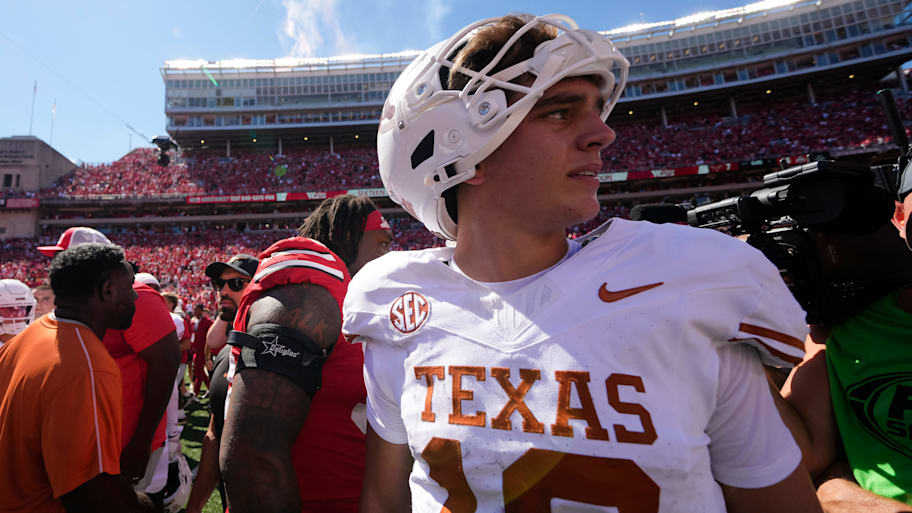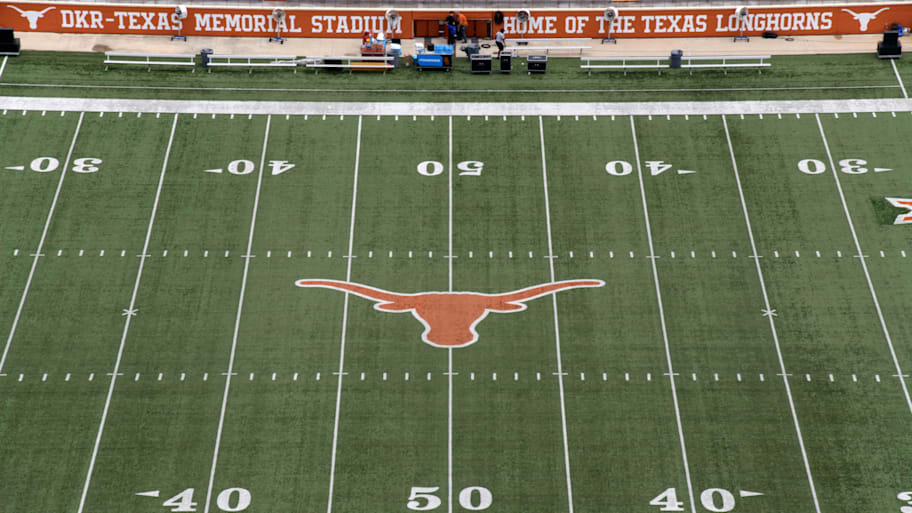
Arch Manning’s much-anticipated season opener at Ohio Stadium ended with far more than a loss in the standings. The Texas Longhorns quarterback, who has carried immense expectations since arriving in Austin, saw his NIL valuation drop by $485,000 after a 14-7 defeat against Ohio State.
According to On3, Manning’s NIL valuation now sits at $6.3 million, still the highest among college football players, but the decline was the largest of any athlete in Week 1.
The scrutiny has been relentless. The 21-year-old signal-caller completed 17 of 30 passes for 170 yards, with one touchdown and one interception. Most of his production came late in the game, as the Longhorns failed to find the end zone until the fourth quarter.
For a quarterback who was already the focus of outsized attention, the dip in valuation underscores just how much his performances are tied to both perception and market forces.
Arch Manning’s Performance Fuels Doubt And Criticism
Former Alabama quarterback AJ McCarron empathized with Manning, saying on The Dynasty podcast that the pressure was unfair. “The hype is just set at such a high level to where I don’t know if the kid can ever live up to it,” McCarron said. He pointed to Ohio State defensive coordinator Matt Patricia’s schemes as a major factor, noting that Manning looked rattled and often held the ball too long.
ESPN analyst Ryan Clark, however, was far more critical. Writing on X, he declared Manning “is not a generational talent” and stressed that expectations were misplaced. Clark argued that Manning never faced elite competition in high school and will need time to adjust at this level.

Manning’s first half was rocky, with just 26 passing yards, though he rebounded somewhat in the second half with 144 yards and a late touchdown.
The divide in opinion reflects a larger conversation about what Manning truly is at this stage of his career. For some, Week 1 was simply a young quarterback learning against one of the nation’s best defenses. For others, it confirmed doubts about whether the hype matched the reality.
Texas NIL Structure Highlights Larger Shift In College Athletics
Manning’s valuation dip comes at a time when Texas Athletics is undergoing major NIL restructuring. With the House v. NCAA settlement reshaping how money flows to players, schools like Texas are turning away from traditional collectives. Instead, they plan to rely on corporate partnerships and revenue-sharing to sustain one of the sport’s largest payrolls.
Texas is projected to spend about $35 million on football players in 2025, with Deloitte overseeing compliance as the enforcement arm of the College Sports Commission. Athletic director Chris Del Conte has been transparent about distributing revenue across sports, though football will receive the lion’s share. The new system places pressure on high-value athletes like Manning to justify their price tag with performance, especially in a market that could reset by 2027 as corporate fatigue takes hold.

The balance of power in college athletics may shift as schools decide where to allocate their resources. Programs like Duke or Kentucky could lean even further into basketball, while others, such as Oklahoma, may devote resources to sports like softball or gymnastics. Texas, however, will continue to hinge its financial and athletic identity on football, and Manning remains central to that investment.
Manning has opportunities ahead to steady the narrative. Texas will face San Jose State and UTEP before diving into SEC play, with a marquee matchup against Florida looming in early October. For both his future and the Longhorns’ season, Manning must prove that Week 1 was a stumble, not a trend.
Read more on College Football HQ
More must-reads:
- 'You're gone': Why one Big Ten powerhouse has already killed its CFP hopes
- Georgia Tech playing it close to the vest with Haynes King ahead of Clemson game
- The 'College football FBS nicknames' quiz
Breaking News
Trending News
Customize Your Newsletter
 +
+
Get the latest news and rumors, customized to your favorite sports and teams. Emailed daily. Always free!








